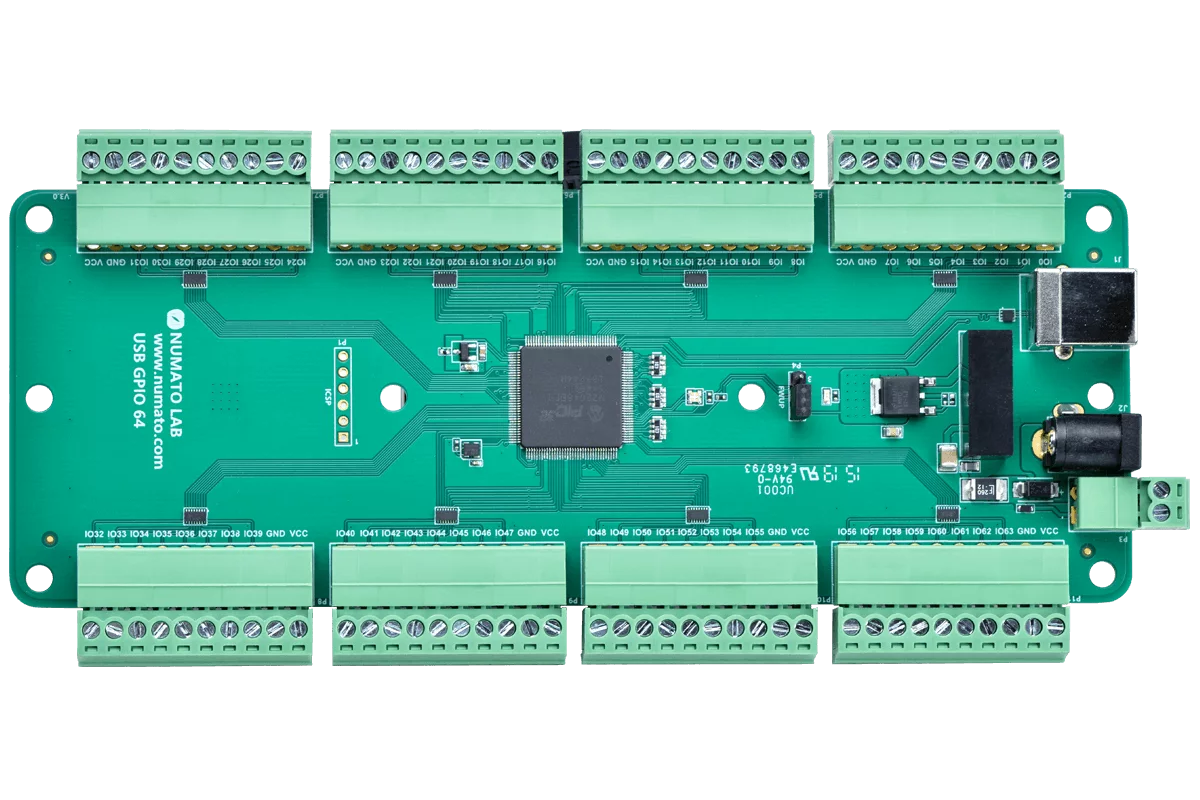

- Usb terminal emulator gpio how to#
- Usb terminal emulator gpio install#
- Usb terminal emulator gpio serial#
- Usb terminal emulator gpio full#

To see messages on the UART you have several options according the Operating System you use. Now we can compile the test project and upload on our Nucleo board using GDB and OpenOCD. Go in Project Explorer->system->src->stm32f4-hal and click with mouse right button on the stm32f4xx_hal_uart.c file, as shown in the following picture:Ĭlick on "Properties" and go to C/C++ Build and uncheck "Exclude from build", as shown below. So, we need to enable the compilation of stm32f4xx_hal_uart.c file. By default, the GNU-ARM plugin for Eclipse disables unused STM32 HAL files, in order to speed up compile operation. The main() is really simple: it simply prints a message on the UART and hangs for ever.īefore we can compile the whole project, we need to do another final operation. For the sake of simplicity, this is the code you have to put inside the _initialize_hardware.c file.
Usb terminal emulator gpio how to#
I've shown how to use the STM32CubeMX tool to generate the right clock initialization code.

If you have followed my previous tutorial about GNU Eclipse plug-in, you already know that the plug-ins generates an incorrect clock configuration for the Nucleo-F4 board. When you generate the test project, you can using the following configuration parameters. We'll generate an empty project using the GCC ARM Eclipse plug-in, as shown in my series about the GCC toolchain for the STM32 platform. Second: the codeīefore we start configuring the USART2 peripheral, we need a test project. We've grabbed all the necessary information related to the hardware needed to start coding. This means that the Nucleo board is configured to use the USART2 peripheral of target MCU. As we can see in the following picture, the USART_TX and USART_RX ports are connected to PA2 and PA3 pins. Now we have to take a look to the Nucleo schematics. Looking to STM32CubeMX tool, we discover that the STM32F401RETx processor has 3 different USARTs: USART1, USART2 and USART6. First: pinoutĪ complex yet flexible MCU like the STM32 provides I/Os that have "overloaded" functionalities.This means that, before we can use a peripheral (in our case, the USART), we need to configure the peripherals associated to corresponding pins. I'll assume the Nucleo-F401RE model, but it should be really easy to rearrange instructions to properly use your specific Nucleo.
Usb terminal emulator gpio full#
ST provides the full hardware project of the STM32 Nucleo (the board is designed using the Altium Designer CAD, a professional CAD used in the electronics industry, but you are not required to have a so expensive piece of software to use your Nucleo). But, before we start coding, it could be really useful take a look to the hardware. In this post I'll show you how to properly configure and use the integrated virtual COM port of STM32 Nucleo board.
Usb terminal emulator gpio serial#
The serial port is mostly useful for two reasons: if you want to debug your firmware printing messages (not strictly necessary with the ARM architecture, since we can also use ARM semihosting) or if you want to exchange commands and messages between your Nucleo board and your PC (perhaps, using a dedicated application you are building). Usually, this device is named something similar to tty.usbmodemXXXX, as shown below. If you use a Linux PC or a Mac, you'll find a new terminal in the /dev directory.
Usb terminal emulator gpio install#
When you install the ST-Link drivers, a new device appears in your hardware devices list: the ST-Link Virtual COM port.

But, it provides at least another really useful feature: a Virtual COM port. ST Link is mainly designed to allow flashing of target MCU trough the mini-USB interface. As we have seen in the previous tutorial about this new developing board from ST, the STM32 Nucleo provides an integrated ST Link v2.1 interface.


 0 kommentar(er)
0 kommentar(er)
